Analyzing the rhythmically layered bedrock above the marker band: Sols 3669-3670
Friday, 02 December 2022 05:09 Curiosity drove ~25 meters back toward the Marker Band from our detour to the Gediz Vallis Ridge and has returned to the rhythmically layered bedrock we observed on Sols 3648-3649.
The first time Curiosity encountered these rocks we were unable to analyze them because one of the rover's wheels was perched on a rock. Now that we are parked safely, we will use a "Touch and Go" approach where
Curiosity drove ~25 meters back toward the Marker Band from our detour to the Gediz Vallis Ridge and has returned to the rhythmically layered bedrock we observed on Sols 3648-3649.
The first time Curiosity encountered these rocks we were unable to analyze them because one of the rover's wheels was perched on a rock. Now that we are parked safely, we will use a "Touch and Go" approach where NASA May Have Landed on a Martian Megatsunami Deposit Nearly 50 Years Ago
Friday, 02 December 2022 05:09 When NASA's Viking 1 lander touched down on the surface of Mars nearly 50 years ago, its cameras imaged a boulder-strewn surface of elusive origin. New research led by Planetary Science Institute Senior Scientist Alexis Rodriguez shows the landing site may be on the margins of a megatsunami deposit, formed when a 3-kilometer asteroid impacted a northern Martian ocean about 3.4 billion years ago.
When NASA's Viking 1 lander touched down on the surface of Mars nearly 50 years ago, its cameras imaged a boulder-strewn surface of elusive origin. New research led by Planetary Science Institute Senior Scientist Alexis Rodriguez shows the landing site may be on the margins of a megatsunami deposit, formed when a 3-kilometer asteroid impacted a northern Martian ocean about 3.4 billion years ago. Webb Space Telescope, Keck team up to study Saturn's moon Titan
Friday, 02 December 2022 05:09 The James Webb Space Telescope (JWST) has turned its infrared cameras on Saturn's moon Titan, giving astronomers another eye on the largest and one of the most unusual moons in the solar system.
The only satellite with a dense atmosphere, it's also the only world besides Earth that has standing bodies of liquid on its surface, including rivers, lakes and seas - though the liquid is thought
The James Webb Space Telescope (JWST) has turned its infrared cameras on Saturn's moon Titan, giving astronomers another eye on the largest and one of the most unusual moons in the solar system.
The only satellite with a dense atmosphere, it's also the only world besides Earth that has standing bodies of liquid on its surface, including rivers, lakes and seas - though the liquid is thought Kleos partners with UP42
Friday, 02 December 2022 05:09 Kleos Space has partnered with leading geospatial developer platform and marketplace, UP42, to offer Kleos' RF geolocation data to their platform users.
Under the partnership, Kleos' geospatial data product, Guardian LOCATE, will be available on UP42's marketplace. Guardian LOCATE provides processed geolocated radio frequency transmissions collected over key areas of interest by Kleos' sat
Kleos Space has partnered with leading geospatial developer platform and marketplace, UP42, to offer Kleos' RF geolocation data to their platform users.
Under the partnership, Kleos' geospatial data product, Guardian LOCATE, will be available on UP42's marketplace. Guardian LOCATE provides processed geolocated radio frequency transmissions collected over key areas of interest by Kleos' sat Rocket Lab launches subsidiary focused on national security market
Thursday, 01 December 2022 22:46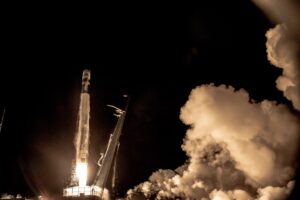
Rocket Lab USA is creating a separate entity to focus on U.S. defense and intelligence agency customers.
The post Rocket Lab launches subsidiary focused on national security market appeared first on SpaceNews.
Eutelsat orders GEO broadband satellite with LEO in mind
Thursday, 01 December 2022 21:07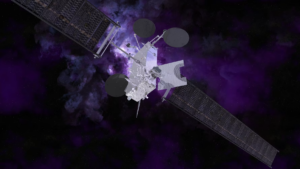
Eutelsat said Dec. 1 it has ordered a geostationary broadband satellite to support multi-orbit services in the Americas from 2026.
The post Eutelsat orders GEO broadband satellite with LEO in mind appeared first on SpaceNews.
With a small network of satellites around Mars, rovers could navigate autonomously
Thursday, 01 December 2022 17:21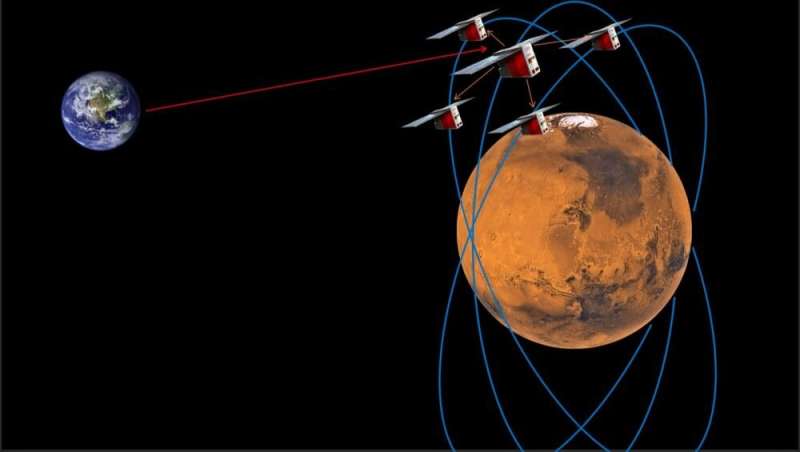
When it comes to "on the ground" exploration of Mars, rovers make pretty good advance scouts. From Pathfinder to Perseverance, we've watched as these semi-autonomous robots do what human explorers want to do in the future. Now, engineers are studying ways to expand rover exploration on Mars. One thing they're thinking about: communication satellite constellations for Mars surface navigation.
The current generation of Mars rovers landed in easily accessible places. Other Martian regions, such as the poles, or Valles Marineris, remain pretty much untouched. That's partly because they're difficult to reach and their weather conditions present challenges. The poles hold a lot of clues to the Martian climate system. Although one cap is known to be mostly water ice, both caps could contain (or be hiding) additional water either in underground lakes or frozen beneath the caps.
BlueWalker 3, an enormous and bright communications satellite, is genuinely alarming astronomers
Thursday, 01 December 2022 17:14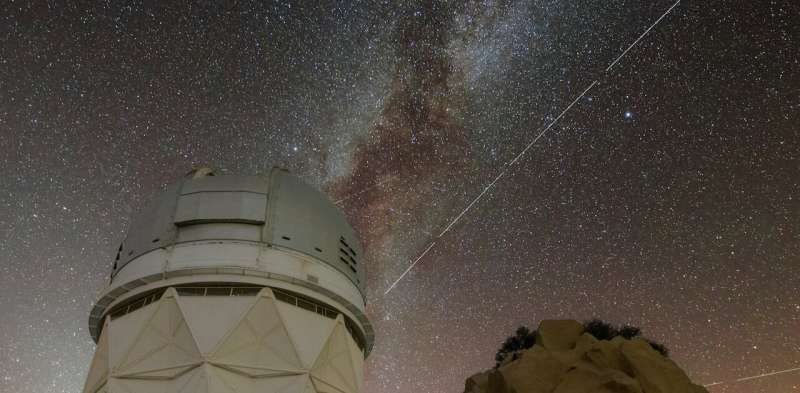
The night sky is a shared wilderness. On a dark night, away from the city lights, you can see the stars in the same way as your ancestors did centuries ago. You can see the Milky Way and the constellations associated with stories of mythical hunters, sisters and journeys.
But like any wilderness, the night sky can be polluted. Since Sputnik 1 in 1957, thousands of satellites and pieces of space junk have been launched into orbit.
For now, satellites crossing the night sky are largely a curiosity. But with the advent of satellite constellations—containing hundreds or thousands of satellites—this could change.
The recent launch of BlueWalker 3, a prototype for a satellite constellation, raises the prospect of bright satellites contaminating our night skies. At 64 square meters, it's the largest commercial communications satellite in low Earth orbit—and very bright.
Pollution of the night sky
Cognitive Space hires retired general as strategic advisor
Thursday, 01 December 2022 14:30
Cognitive Space, a startup based in Houston, Texas, announced Dec. 1 that retired U.S. Air Force Maj. Gen. Aaron Prupas has joined the company as a strategic advisor.
The post Cognitive Space hires retired general as strategic advisor appeared first on SpaceNews.
AST SpaceMobile plots $86 million share sale
Thursday, 01 December 2022 13:23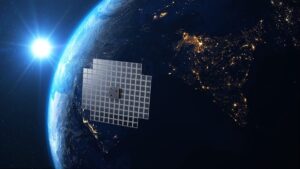
AST SpaceMobile said Nov. 30 it could raise more than $86 million from selling a chunk of shares as the company looks to accelerate its direct-to-smartphone constellation plans.
The post AST SpaceMobile plots $86 million share sale appeared first on SpaceNews.
China ready to implement moon landing project
Thursday, 01 December 2022 11:35 China has made breakthroughs in the development of the new-generation crewed spaceship, new-generation manned carrier rocket, moon lander, and moon landing spacesuit, stepping closer to its moon landing goal, according to the China Manned Space Agency on Monday.
China has completed key technology research and validation of the manned lunar exploration project, forming a moon landing implem
China has made breakthroughs in the development of the new-generation crewed spaceship, new-generation manned carrier rocket, moon lander, and moon landing spacesuit, stepping closer to its moon landing goal, according to the China Manned Space Agency on Monday.
China has completed key technology research and validation of the manned lunar exploration project, forming a moon landing implem Pulsar Fusion funded by the UK Govt to construct a nuclear based space engine
Thursday, 01 December 2022 11:35 Pulsar Fusion, a UK rocket company that has seen its advanced space engines tested in the UK and Switzerland earlier this year, has been awarded funding from the UK Space Agency to develop 'Integrated nuclear fission-based power systems for electric propulsion'
The project will be supported by Southampton and Cambridge Universities and Nuclear AMRC.
Pulsar Fusion, based in Bletchley, Buck
Pulsar Fusion, a UK rocket company that has seen its advanced space engines tested in the UK and Switzerland earlier this year, has been awarded funding from the UK Space Agency to develop 'Integrated nuclear fission-based power systems for electric propulsion'
The project will be supported by Southampton and Cambridge Universities and Nuclear AMRC.
Pulsar Fusion, based in Bletchley, Buck Artemis I Flight Day 15 - Team Polls "Go" For Distant Retrograde Orbit Departure
Thursday, 01 December 2022 11:35 The Artemis I mission management team met to review the overall status of the flight test and polled "go" for Orion to depart from its distant retrograde orbit, where it has been since Nov. 25. Orion will conduct a burn to depart the orbit at 3:53 p.m. CST Thurs., Dec. 1 and begin its trek back toward Earth.
"We are continuing to collect flight test data and buy down risk for crewed flight
The Artemis I mission management team met to review the overall status of the flight test and polled "go" for Orion to depart from its distant retrograde orbit, where it has been since Nov. 25. Orion will conduct a burn to depart the orbit at 3:53 p.m. CST Thurs., Dec. 1 and begin its trek back toward Earth.
"We are continuing to collect flight test data and buy down risk for crewed flight China's six astronauts in two missions make historic gathering in space
Thursday, 01 December 2022 11:35 The six Chinese astronauts from the Shenzhou XIV and Shenzhou XV missions marked a historic moment on Wednesday as they met inside the country's Tiangong space station.
It was the first time that six Chinese were in a space station at the same time and the first in-orbit gathering of two Chinese crews.
After about two hours of preparatory work following the docking of the Shenzhou XV
The six Chinese astronauts from the Shenzhou XIV and Shenzhou XV missions marked a historic moment on Wednesday as they met inside the country's Tiangong space station.
It was the first time that six Chinese were in a space station at the same time and the first in-orbit gathering of two Chinese crews.
After about two hours of preparatory work following the docking of the Shenzhou XV Eutelsat selects Thales Alenia Space to build a new flexible software-defined satellite
Thursday, 01 December 2022 11:35 Eutelsat Communications (Euronext Paris: ETL) (Paris:ETL) has selected Thales Alenia Space (Thales 67 % and Leonardo 33 %) to build a next-generation highly flexible, software-defined satellite (SDS).
The Flexsat (for flexible satellite) will be based on Thales Alenia Space's cutting-edge 'Space Inspire' (INstant SPace In-orbit REconfiguration) product line, enabling seamless reconfigurati
Eutelsat Communications (Euronext Paris: ETL) (Paris:ETL) has selected Thales Alenia Space (Thales 67 % and Leonardo 33 %) to build a next-generation highly flexible, software-defined satellite (SDS).
The Flexsat (for flexible satellite) will be based on Thales Alenia Space's cutting-edge 'Space Inspire' (INstant SPace In-orbit REconfiguration) product line, enabling seamless reconfigurati 
